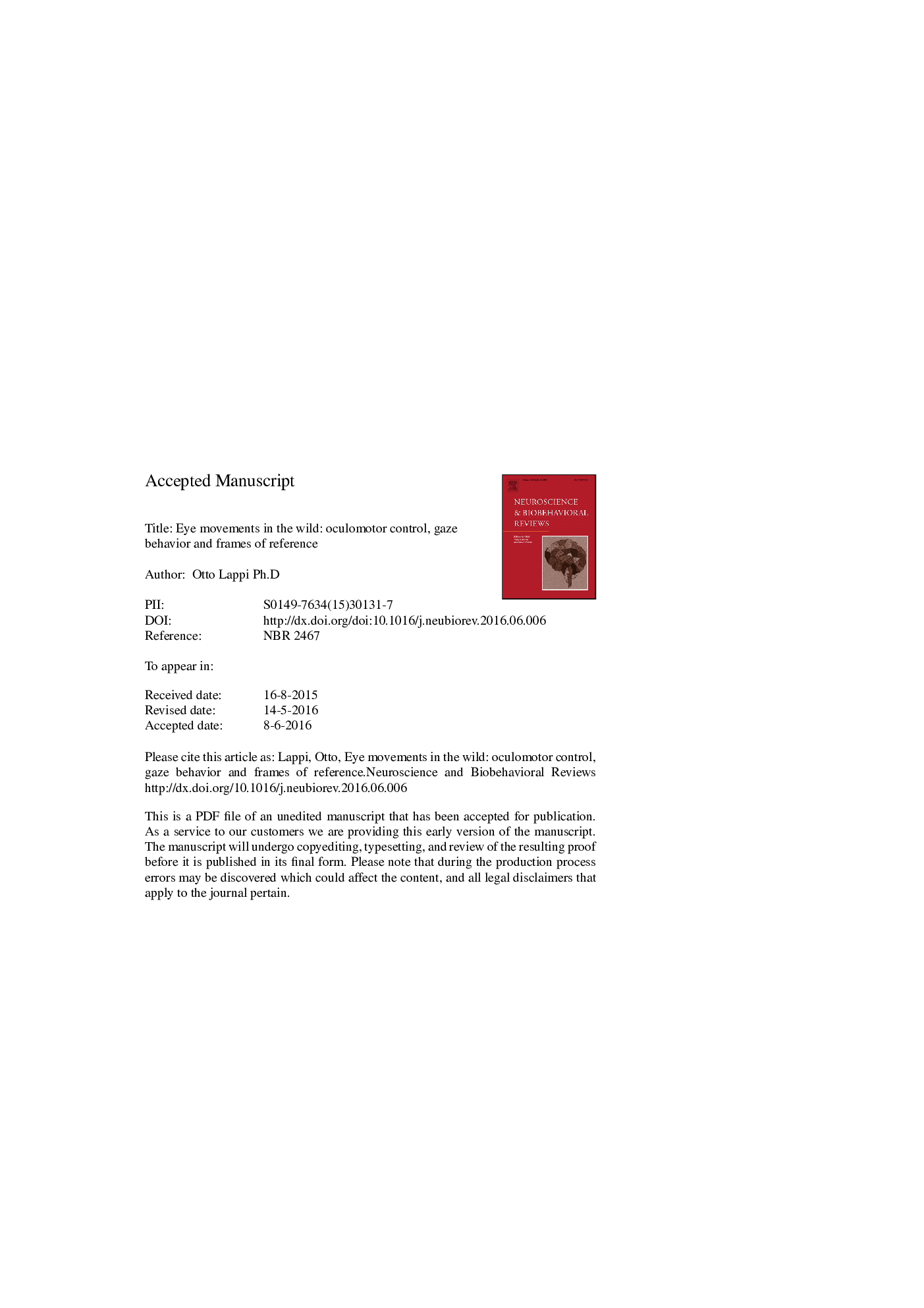| Article ID | Journal | Published Year | Pages | File Type |
|---|---|---|---|---|
| 7302732 | Neuroscience & Biobehavioral Reviews | 2016 | 80 Pages |
Abstract
Understanding the brain's capacity to encode complex visual information from a scene and to transform it into a coherent perception of 3D space and into well-coordinated motor commands are among the outstanding questions in the study of integrative brain function. Eye movement methodologies have allowed us to begin addressing these questions in increasingly naturalistic tasks, where eye and body movements are ubiquitous and, therefore, the applicability of most traditional neuroscience methods restricted. This review explores foundational issues in (1) how oculomotor and motor control in lab experiments extrapolates into more complex settings and (2) how real-world gaze behavior in turn decomposes into more elementary eye movement patterns. We review the received typology of oculomotor patterns in laboratory tasks, and how they map onto naturalistic gaze behavior (or not). We discuss the multiple coordinate systems needed to represent visual gaze strategies, how the choice of reference frame affects the description of eye movements, and the related but conceptually distinct issue of coordinate transformations between internal representations within the brain.
Keywords
Related Topics
Life Sciences
Neuroscience
Behavioral Neuroscience
Authors
Otto Ph.D,
